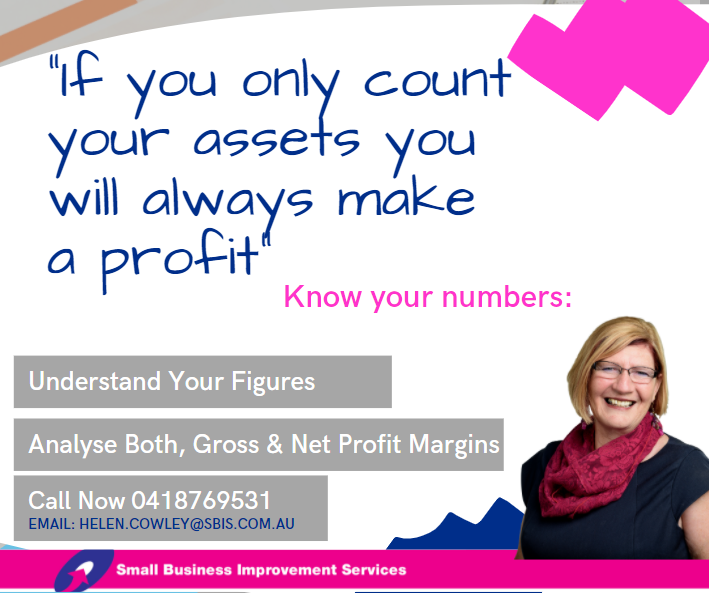“Performance and Profitability” – Know your Numbers 
• Not moving forward in your performance and profitability?
• Not understanding the way forward?
Key performance indicators and business ratios are used by businesses of all sizes. KPI measurement uses data you already have, to show how well your business is performing. They will be different for each business, but the basic idea is the same. That is, to measure the important features of your business.
An example of this is: your blood pressure reading only says a little about your overall health. When you combine this with cholesterol levels and BMI, you and your doctor get a more informed picture of your overall health. In the same way, a single business KPI tells a small part of the story about your business. Looking at a set of business KPIs or metrics tells a bigger story. Measuring KPIs helps you understand your business from top to bottom. You can use that knowledge to make effective, strategic decisions.
Financial Metrics
1. Analyse both gross and net profit margin to better understand how successful your organization is at generating a high return.
2. Measure cost effectiveness and find the best ways to reduce and manage your costs
3. Revenue Vs. Budget Target: This is a comparison between your actual revenue and your projected revenue. Charting and analysing the discrepancies between these two numbers will help you identify how you are performing.
4. Cost Of Goods Sold: By tallying all production costs for the product/service your company is selling, you can get a better idea of both what your product mark-up should look like and what your actual profit margin is. This is key in determining how to outsell your competition.
5. Day Sales Outstanding: Take your accounts receivable and divide them by the number of total credit sales. Take that number and multiply it by the number of days in the timeframe you are examining. Congratulations—you’ve just come up with your DSO number! The lower the number, the better your organization is doing at collecting accounts receivable. Run this formula every month, quarter, or year to see how you are improving.
6. Expenses Vs. Budget: Compare your actual overhead with your forecasted budget. Understanding where you deviated from your plan can help you create a more effective budget in the future.
Customer Metrics
1. Customer Lifetime Value: Minimizing cost isn’t the only (or the best) way to optimize your customer acquisition. CLV helps you look at the value your organization is getting from a lo
ng-term customer relationship. Use this performance indicator to narrow down which channel helps you gain the best customers for the best price.
2. Customer Acquisition Cost: Divide your total acquisition costs by the number of new customers in the time frame you’re examining and you have found your CAC. This is considered one of the most important metrics in e-commerce because it can help you evaluate how cost effective your marketing campaigns have been.
3. Customer Satisfaction & Retention: On the surface, this is simple: make the customer happy and they will continue to be your customer. You can use multiple performance indicators to measure CSR, including customer satisfaction scores and percentage of customers repeating a purchase.
4. Net Promoter Score: Finding out your NPS is one of the best ways to indicate long-term growth. To determine your NPS score, send out quarterly/or 6mthly surveys to your customers to see how likely it is that they’ll recommend your organization to someone they know. Establish a baseline with your first survey and put measures in place that will help those numbers grow quarter to quarter.
5. Number Of Customers: Similar to profit, this performance indicator is fairly straightforward. By determining the number of customers you’ve gained and lost, you can further understand whether or not you are meeting your customers’ needs.
6. Referral Rate: The key to measuring your referral rate is by asking new customers how they found out about your product/service. You can add incentives for users to refer others easily enough, which will help you get your answers.
As you can see, key performance indicators and business ratios are useful in all areas of business. But it’s important to use them in the right way and not just define a KPI and then forget about it. Make sure that whatever you choose to measure is relevant, reviewed and tracked on a regular and frequent basis.
Financial Benchmarking your business will help you get a clear view of where your business is now – and where it’s going. Used properly, this will help you take the pulse of your organisation’s health and make important decisions. Remember measuring performance is KEY to better understanding and future profitability.



